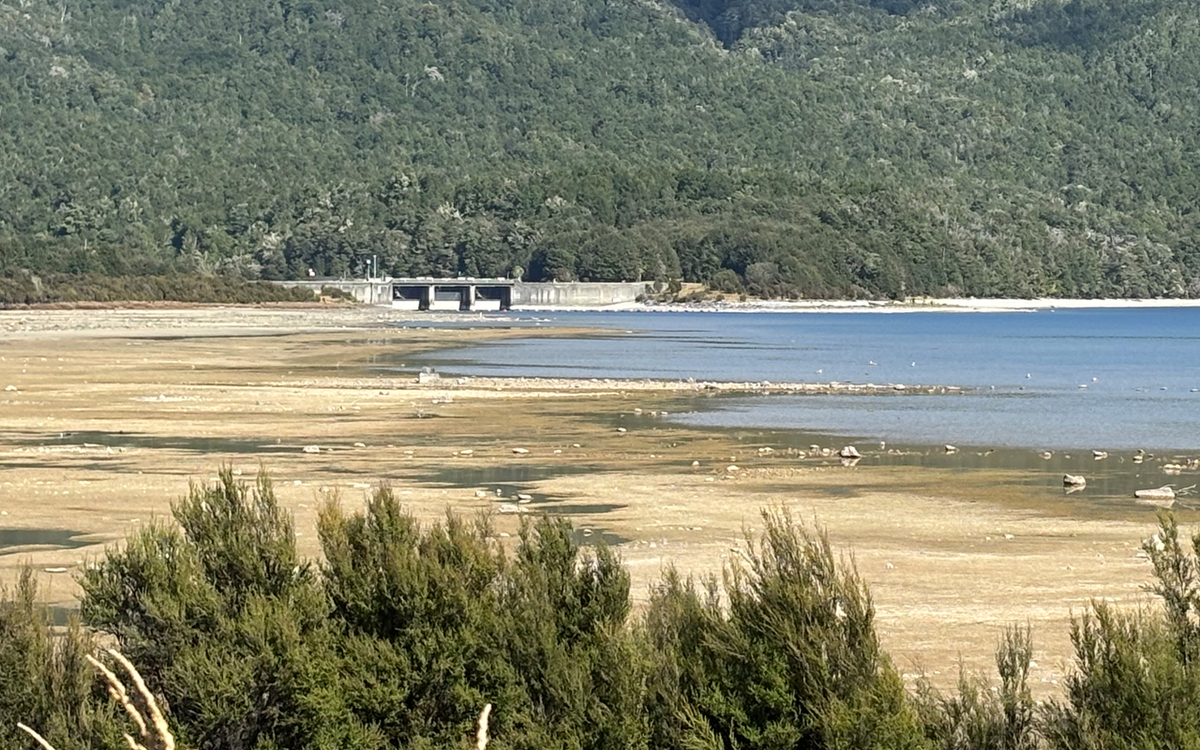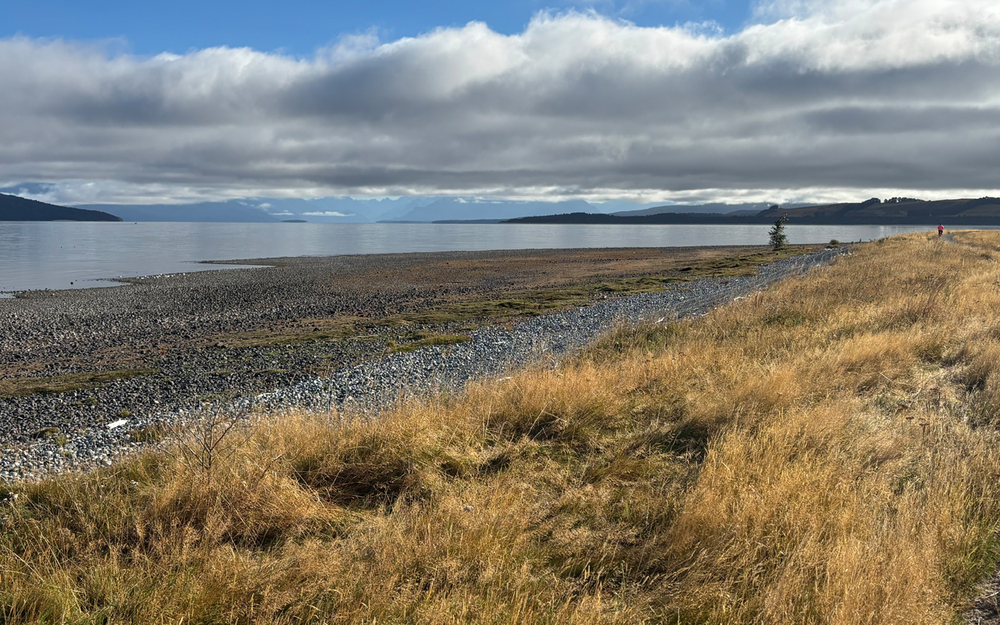Careful management required as Fiordland's hydro lake levels fall
28 February 2025, 4:09 AM
 The Te Anau Lake Control Structure appears high and dry as the Fiordland lake operates at its low level. Photo: Southland App
The Te Anau Lake Control Structure appears high and dry as the Fiordland lake operates at its low level. Photo: Southland AppLow Fiordland lake levels and reduced inflows are forcing hydro energy company Meridian Energy to conserve its water reserves and drop the amount of electricity generated by its Manapouri underground power station.
Both Lakes Te Anau and Manapouri are currently operating in their low range, with pressure on them likely to continue once the annual March-April equinoctial period starts.

A low Lake Te Anau. Photo: Southland App
Lake Te Anau's level is currently just over 201 metres above sea level (usually sits between 201.5 and 202.7) while Lake Manapouri's level is around 176.8 metres above sea level (usually between 176.8 and 178.6)
Water outflow into the Upper Waiau River fell below its normal 115 cubic metres per second (cumecs) level on January 1st and has steadily decline since.
Outflows from Lake Manapouri fell just below their normal levels in late November 2024 and have remained there ever since.
Meridian has, in consultation with the Guardians of Lakes Manapouri, Monowai and Te Anau, Ngai Tahu and the Fish and Game Council, now lowered the water outflow from Lake Te Anau into the Upper Waiau River to 85 cumecs.
A Meridian spokesperson said around 100mm of rain overnight on Monday (24 Feb) had topped up levels slightly.
However the Upper Waiau River flow rate would be reviewed again in the middle of next week once it was clear to see if lake levels were recovering, they said.
On 25th February Meridian's largest single customer, New Zealand Aluminium Smelters, announced in a joint statement that they would provide 50MW per hour of electricity - enough to power around 20,000 average homes - from 10th March to the 31st August for a projected winter demand by customers.
Meridian Chief Executive Neal Barclay said there was still plenty of time for it to rain before winter.
"But based on current inflows it is prudent for us to use agreements like this to protect some of the water we’re holding and ensure we head into winter in the strongest possible position.”